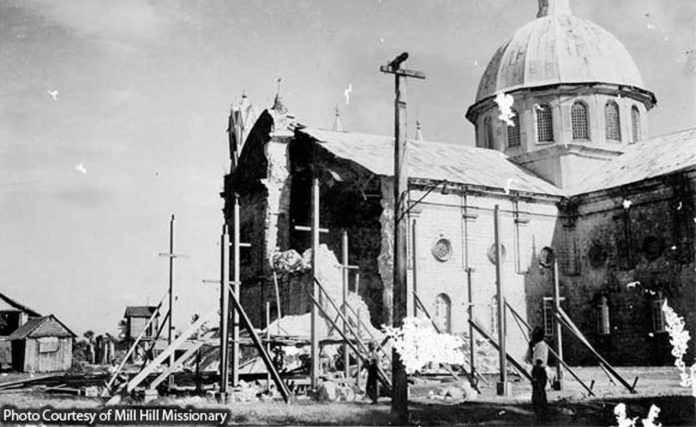
ILOILO City – Long before the recent Myanmar earthquake shook the region’s consciousness, Western Visayas had already witnessed one of the most powerful tremors in Philippine history: the 1948 “Lady Caycay” earthquake.
Striking at around 1:45 a.m. on January 25, 1948, the magnitude 7.8 earthquake had its epicenter near Anini-y, Antique, and devastated large portions of Panay Island, particularly the provinces of Antique and Iloilo.
The quake earned the name “Lady Caycay” from locals, derived from the Hiligaynon word caycay, meaning “to scratch”, a reference to how the ground cracked open and trembled violently, as if clawed by unseen hands.
According to historical accounts, the earthquake damaged key infrastructure, and left dozens dead and injured. Iconic structures such as the Jaro Cathedral belfry, with many Spanish-era stone churches across Iloilo and Antique either partially collapsed or rendered unsafe.
There were also reports of ground fissures, though a major tsunami did not occur.
With a magnitude equal to the infamous 1990 Luzon Earthquake, the “Lady Caycay” tremor is considered the second strongest earthquake in Philippine recorded history. Yet, despite its severity, it remains relatively under-recognized at the national level.
For Office of Civil Defense Region 6 director Raul Fernandez, the 1948 quake is a reminder that Western Visayas is not exempt from major seismic threats.
“We already had Lady Caycay,” he said, noting the importance of institutional memory and historical awareness in disaster preparedness.
The event, Fernandez emphasized, should be more than just a footnote in history books — it should serve as a case study for why retrofitting, land use regulation, and equipment investment are essential for Region 6 today.
“We need to ensure our buildings are retrofitted, and for new constructions, we must strictly follow the Building Code,” Fernandez told Panay News.
He stressed that implementing such measures is possible, with the key factors being political will and public education on the importance of the Building Code.
“It’s really just about political will and educating people on the importance of safety,” Fernandez continued. “It’s crucial for our survival.”
If retrofitting is not immediately feasible, strict enforcement of land use plans, particularly banning construction in hazard-prone areas, should be prioritized, he stressed./PN





